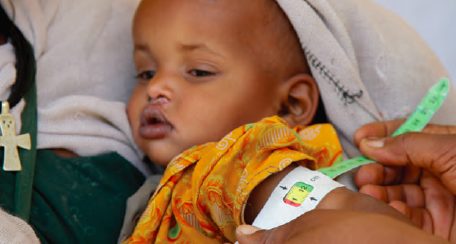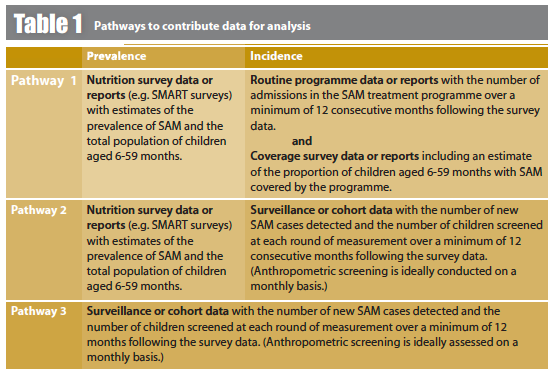UNICEF call for data sharing for incidence analysis
 UNICEF has issued a request to organisations to share data to inform an analysis of the incidence of severe acute malnutrition (SAM) at country level. This analysis aims to strengthen global guidance on estimating the burden of SAM and programme caseloads.
UNICEF has issued a request to organisations to share data to inform an analysis of the incidence of severe acute malnutrition (SAM) at country level. This analysis aims to strengthen global guidance on estimating the burden of SAM and programme caseloads.
Problem statement
The estimated number of SAM cases (SAM burden) guides priority-setting and programme planning for human, institutional and financial resources. Current guidance defines the burden of SAM as the sum of the existing (prevalent) cases and the new (incident) cases, but in the absence of incidence data, practical calculation of the SAM burden often relies on prevalence of SAM and an ‘incidence correction factor’. Technical limitations related to the incidence correction factor remain. These are: the incidence correction factor included in current guidance of 1.6 was developed based on historical data from two sites. Programme experience and recent analysis1 now suggest that there is considerable variation between countries and this value may be inadequate. Routine survey, programme and surveillance or cohort data may be useful to generate updated and country-specific SAM incidence correction factors.
Aims
UNICEF aims to build the evidence base for incidence of SAM in different countries and contexts to improve estimation of the SAM burden and programme planning and is calling on implementing actors in the global nutrition community to provide survey, programme, surveillance and cohort data for this purpose. By generating country-specific incidence correction factors, this analysis will help us understand if, how and the extent to which the incidence correction factor for SAM varies between countries in order to improve global guidance and programme planning tools. Specific questions will include:
- What are the gaps in the distribution and quality of available data for SAM incidence?
- Where data exists, to what degree does SAM incidence vary between countries?
- Where data exists, to what degree does SAM incidence vary sub-nationally and seasonally?
- What are the minimum capacity and data requirements to generate country-specific SAM incidence figures?
- What are the potential implications of variations in SAM incidence factors on global modelling and joint estimates of SAM burden?
Other limitations to the global guidance, such as the discrepancy between prevalence based on weight-for-height versus MUAC, require further work through other processes.
This work will be undertaken by UNICEF under the guidance of a Technical Advisory Committee and will be shared with agencies contributing data, national governments and other key stakeholders. The overall purpose of the work is to improve methods for generating SAM burden estimates and update global guidance for SAM programme planning. Given UNICEF’s commitment to working with national governments and partners on scaling up SAM management globally, improved tools that will enable country-level staff to improve programming and planning are a priority.
Your help is needed
There are three pathways to contribute data (see Table 1). These data or reports may already exist within your organisation. UNICEF is happy to work with you to help identify the data (including the format and variables) or reports that will be most useful for this analysis. Even if your agency does not have all the required data within each pathway, data from your organisation may complement sources from other agencies.
Any raw data shared by your organisation will be checked and cleaned, as well as verified to ensure there is no duplication with other or existing datasets. In return for the data shared, UNICEF will acknowledge your organisation in any reports produced. UNICEF will also return files provided in a cleaned format if requested.
Raw data provided will not be used for any other use than that stated and it will not be shared with any third party. Only de-identified (i.e. anonymous) data without personal identifiers will be accepted to minimise risk of identification of individuals. A standard project agreement letter will be signed between your organisation and UNICEF for any raw data shared.

The call for data runs from February through to end March 2017. For more information, please contact Louise Mwirigi, email: lmwirigi@unicef.org or the programme manager at nutritiondata@unicef.org
Footnotes
1Isanaka S, O’Neal Boundy E, Graise RF, Myatt M and Briend A. (2016). Improving Estimates of Numbers of Children With Severe Acute Malnutrition Using Cohort and Survey Data. American Journal of Epidemiology Advance Access, published November 17, 2016. DOI: 10.1093/aje/kww129. See summary in this issue (54) of Field Exchange.

